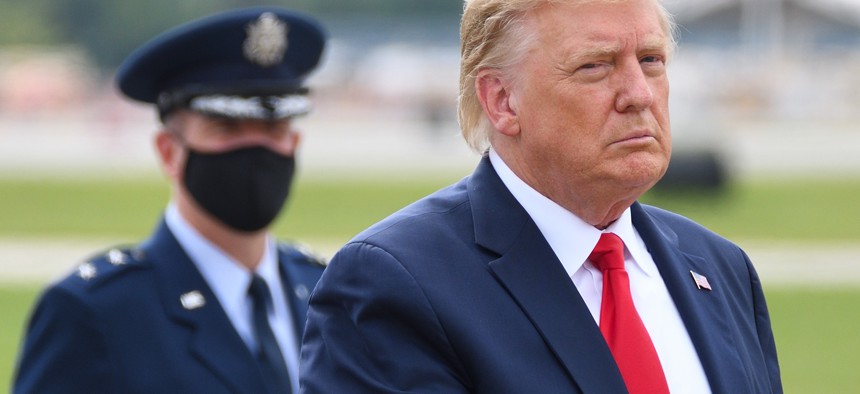What Trump’s tax returns reveal about his charitable giving

President Donald Trump's face. Evan El-Amin / Shutterstock
New details about President Donald Trump’s tax returns have emerged, thanks to a bombshell report from the New York Times revealing how the president has avoided paying federal income taxes or otherwise paying minimal amounts. But the article also reveals that a large portion of Trump’s charitable giving is related to his estate in Westchester.
Trump bought the Seven Springs estate in Westchester County in 1996 with the intent of developing a golf course or luxury homes on the property. Local opposition to the plan stymied that effort, though. Eventually, in 2015, Trump signed a conservation easement with a land conservancy, agreeing to avoid developing on most of the property. That agreement allowed him to claim a $21.1 million charitable tax deduction.
That deduction has accounted for most of Trump’s charitable giving, according to the Times. About $119.3 million of approximately $130 million in personal and corporate charitable contributions he has reported throughout the years are related to various conservation easements at Trump properties.
Attorney General Letitia James is already investigating whether Trump inflated the value of the estate around the time the agreement was made. Nothing revealed in the Times report is explicitly illegal or criminal. But conservation easement transactions have been under heavy scrutiny from the Internal Revenue Service lately, because as the U.S. Senate Finance Committee described in a report last month, “syndicated conservation-easement transactions appear to be highly abusive tax shelters.”
Trump has generally had a poor track record on his charitable initiatives. The Trump Foundation was forced to dissolve and the president had to pay $2 million in damages over revelations that the foundation used charitable funds to promote his presidential campaign, pay off his companies’ debt and purchase a $10,000 portrait of himself.
NEXT STORY: State loan program now open to PPP recipients
